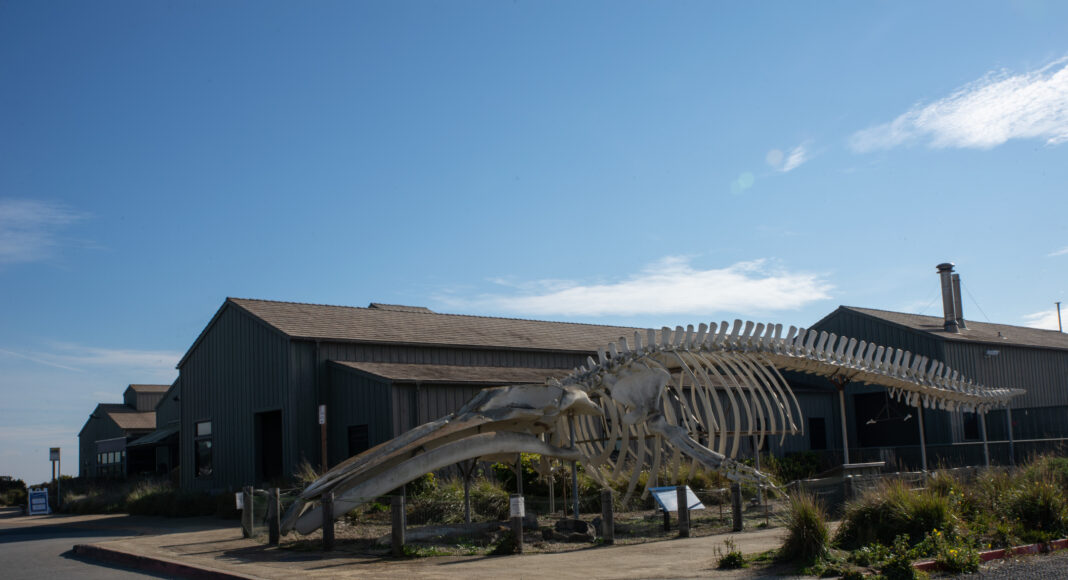When Jonathan Hicken took over as executive director of the UCSC Seymour Marine Discovery Center in August of 2021, he began thinking about new ways to engage visitors. Since 1979, the science center has educated the public about local marine research.
But Hicken envisions more. He wants a gathering place—an idea incubator that connects scientists with activists and inspires community members to take action.
In May, the Seymour Center began working with the award-winning museum design firm Gyroscope to make that vision a reality. Hicken talked to GT about the vision and steps to get there.
What’s next for the Seymour Center?
JONATHAN HICKEN: It’s an already beloved institution, with so much potential to evolve. And that’s in no small part due to these hundreds and hundreds of passionate volunteers who give their time and their souls and their lifeblood to make this place work. It’s really been a community effort for a long time. And it can be so much more.
I think it first starts by acknowledging and recognizing the impacts of climate change on our community.
UCSC is doing some world-class, leading science on climate change, on the ocean, on coastal resilience in general. Meanwhile, the community is doing a lot of boots-on-the-ground work to respond.
But something I’ve heard from people a lot was this idea of, like, “I know people are studying this, and people are working on it. But I don’t really understand how it all fits together. And I don’t really know where to start. Like, yeah, I could buy a metal straw; Or yeah, I could do a beach cleanup. But really, what’s the meat of this? Where are we headed as a community? And how do I plug in?”
So when I started noticing that, I was like, “Okay, here’s an opportunity for Seymour Center to be this hub of connecting people. The people studying it. The people acting on it. How are we connecting all of those ideas and all those people? And most importantly, how are we going to leave every visitor with something concrete and actionable and attainable and meaningful that they can do as their next step to get more involved in the local response to climate change?”
Because Santa Cruz County, we’re not going to solve climate change alone, but we can prepare our community for it, and we can play our little role in the global effort. We can build hope that communities do have some agency over what happens.
I’m seeing this opportunity for us to be this vibrant, inclusive gathering space where people learn about the science behind the coastal environmental issues that are most relevant to this community right here, right now. Connect with fellow nature lovers and science geeks and walk away with that next step for them in their own life.
What will that look like?
[He pulls up a map of the center, sectioned into a few areas.] In this rendering, you’re seeing a maker lab in the foreground, and an action hub in the background. So the maker lab is Exploratorium-esque, hands-on, learn-by-doing, learn-by-building, getting your hands dirty. And then in the back is an innovative new space called an action hub, which is dedicated to that next step.
Maybe you’re taking an action right on the spot by writing a letter or signing something. Or maybe you’re making a pledge. Or maybe you’re meeting a climate hero, so to speak, in our community who’s already done some of the stuff that you can look up to.
The ocean is always going to be central to what we do. And the aquarium’s not going anywhere, so there will always be live animals here. But we are trying to refresh and bring this community new kinds of experiences.
We’re fundraising for that right now. So we’d love to talk to anybody in this community who is interested in making something like this happen.
Once the money is raised, what’s the first concrete step to making this all a reality?
We will re-engage [the] design firm to actually start designing the specifics of these experiences. And once we get to that phase, I’m going to be calling on this community to come share input on what they want to see. This isn’t going to happen in a black box. As soon as we start developing these experiences, we’re going to be seeking the community’s input on the kinds of things they want to see here.
What’s the timeline?
It really depends on how fast we can raise the money. What’s likely is visitors will begin to see some of these experiences show up sooner rather than later. And this will probably be a stepwise sort of development—so little changes that over time will add up to a fully transformed experience.
But hey, if there’s a philanthropic angel out there that wants to come in and fully fund this whole thing, we could get this built a lot more quickly.
What’s next for the center in the new year?
When the maze comes down, we’re going to be introducing a whole new experience all about animal tracking and animal movement and the science behind understanding that, and the kinds of conservation actions we can take when we understand animal movement.
It’s going to be really hands-on. We’re going to have opportunities for people to build things and learn by doing, and we’re also going to have an opportunity for people to take an action right here in the building to support … well, I don’t want to spoil it. There’ll be an action that they can take to support conservation right here in the building.
The Seymour Marine Discovery Center’s current exhibit “Water’s Extreme Journey” is open through Dec 31. 100 McAllister Way, Santa Cruz. seymourcenter.ucsc.edu.












